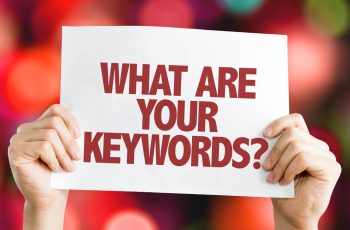5 Things You Should Know About How Mobile has Changed the Way Prospects Use Search Engine Results Pages in 2017
Longest title for a blog post ever. Nailed it. Anyway, moving on to the important topic of the day…
2016 brought many changes in the search engine landscape. We recapped a lot of them, including the arrival of mobile as the dominant search device and the 5 big changes Google brought to mobile search in 2016.
With a new year comes new changes to the search marketing landscape. Today we are going to focus on the search result pages themselves, and how mobile search is changing the ways your prospects interact with them.
Without further delay, here are the 5 things you should know about how your prospects are using search engine results pages!
#5) Mobile Devices are Reconditioning Users
I’ve been around digital marketing long enough to remember the time when making a user scroll in any direction was just bad design. My how things have changed. The advent of Facebook style feeds and the increasing adoption of mobile devices has resulted in a significant alteration in user interaction. So much so that Google removed the right side ads from desktop search results pages last year to mimic its mobile design. In fact, I know people whose entire online experience is driven primarily through their mobile phones and applications.
As you might have guessed, this means fierce competition for the top spot on search engine results pages, both mobile and desktop.
But, it also means that businesses positioned lower on the SERPs, especially around spots 2 to 4, are seeing more click activity than several years ago. This makes it critical for you to be testing and measuring performance at each position. With solid keyword quality scores and a second or third position bid you may reduce your cost per click and cost per lead while increasing your click through rates.
Just be sure not to be listed too far down the page. As the study also found that 7.4% of clicks were below the 4th organic listing on mobile versus 16% on a desktop. And only 62.9% of the mobile searches even resulted in a scroll-down at all. (source: Moz.com)
#4) People Are Viewing More Search Results Listing During a Single Session, but Spend Less Time Viewing Each One
Another side effect of the mobile experience, social media and mobile applications is a shortening attention span of users. As if that weren’t already a problem, it seems these are turning us into a society of attention deficit disorder sufferers.
In short, paid search is more important than ever. Why? The Moz.com study, when looking at mobile SERPs that included paid listings, local listings and a knowledge graph found the following:
- 5% of test subjects looked at the top organic listing, versus 99% on the organic only pages. A 20.7% reduction.
- 2% of SERP clicks were to the top organic listings, versus 40% on the organic only pages. A 17% reduction.
- 57% of SERP clicks went to the top 4 organic listings, versus 75% on the organic only pages. A 24% reduction.
(source: Moz.com)
They didn’t specify exactly where the clicks went when the results page had organic listings, paid listings and knowledge graph but the implication here is clear. Using paid search to be present into the top 3 paid listings will siphon users away from the organic listings on mobile devices.
This is incredible to note because…
#3) Sponsored Results Earn About Twice as Many Clicks as Organic Results…
…for keywords with high commercial intent, an important distinction. In fact, according to the WordStream study for keywords with high commercial intent (meaning the prospect is looking to make a purchase) paid ads received 64.6% of clicks. Meaning in these cases the click is much more likely to go to the paid ad versus an organic listing.
Let that sink in for a moment. I know many companies that spend a fortune of time and money on SEO efforts. When it comes to searches with commercial intent, they are investing significant resources to keep up, for apparently diminishing returns.
I used to recommend that clients employ a 70% SEO and 30% PPC effort. Due to the changing landscape over the years I’ve completely switched. I now recommend 70% to paid search and 30% to SEO. There is a variety of reasons for the switch, but this is certainly one of them. (source: Wordstream)
#2) Mobile Users Click the Top 2 Paid Listings More than Desktop Users
I would file this under things that we already “knew” were happening, but are now proven to be true.
The mobile experience brought with it smaller screen sizes that severely limit our ability to include the same amount of information we used for desktop pages. It also meant that there would be no more divided real estate on the page. No more multi column layouts. It is a vertical experience, with users starting at the top and scrolling down, viewing the content in a tighter sequence. As 3 paid search results become more common at the top of mobile pages, it makes perfect sense that the top two would garner more clicks in our increasingly lazy culture.
So how much more likely are you to get that click in the top 2 positions in mobile, 32.4% more than desktop according to this MOZ study. Capturing that traffic would provide a nice incremental lift to any campaign. (source: Moz.com)
#1) The Top Sponsored Ad is Seen by 91% of Searchers Using a Mobile Device
I saved the best finding of this study for last. Because it is a whopper. Ad Rank, based on your bid and quality scores, has never been more important. The same goes for mobile usability (not to be confused with responsive design).
If you can optimize your way into the top listing in a way that keeps your cost per click reasonable, and you can convert prospects well, you have a chance to reach 91% of your search audience by ranking for the top paid spot on mobile searches.
Ninety. One. Percent.
Remember that statistic the next time someone recommends you focus all efforts on search engine optimization and none on paid search marketing. (source: Moz.com)
Sources:
- https://moz.com/blog/eye-tracking-2016-how-searchers-interact-mobile-serps-desktop
- com “How to Compete in Adwords” eBook





